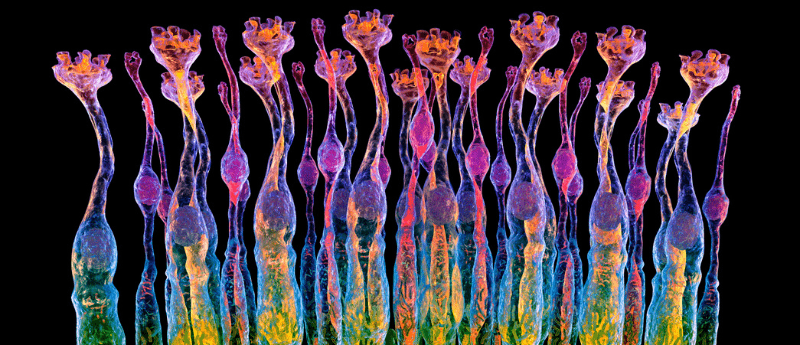Promising stem cell approach to correct photoreceptor degeneration

Researchers from Duke-NUS Medical School (Singapore) and the Karolinska Institute (Stockholm, Sweden) have used embryonic stem cells to restore function to photoreceptor cells in damaged retina models.
Photoreceptor cells are responsible for detecting light and converting this to an electrical signal sent to the brain. There are a multitude of genetic diseases that cause degradation of, or damage to, photoreceptor cells, such as retinitis pigmentosa, where the cells in the retina degrade over time, as well as macular degeneration, the most common cause of vision loss worldwide. Neither currently has an effective treatment to restore vision.
Tissue or cell replacement strategies represent a promising avenue for the treatment of such degenerative diseases, however, options such as retinal organoids require long cell differentiation times and are complex to produce. Therefore, the researchers of the present study sought to create a faster and more efficient method for the differentiation of stem cells into photoreceptors.
The research team hypothesized that laminin proteins had the potential to drive the differentiation of pluripotent human embryonic stem cells into the photoreceptor lineage and sought to investigate their potential.
The team grew embryonic stem cells in the presence of laminin proteins, which did indeed support the differentiation of the stem cells into photoreceptor progenitor cells. These photoreceptor progenitor cells were subsequently transplanted into models of damaged retinas in the hopes of restoring function.
These preclinical models showed significantly improved retinal function and, therefore, improved vision. During a diagnostic test called an electroretinogram, which measures the electrical activity of the retina in response to light stimulus, there was improved electrical function of the cells. The engrafted cells also formed connections with neighboring nerves and retinal cells and survived for many weeks post-transplantation.
“It is exciting to find these results, which suggest a promising route towards using stem cells to treat those forms of visual deterioration and blindness caused by the loss of photoreceptors,” commented Helder Andre (Karolinska Institute), a senior author of the study.
In the future, it is hoped that this new method can be refined to make it simpler and have more reliable results. It is then the goal to move this method into human patient trials.
Corresponding author, Karl Tryggvason (Duke-NUS Medical School) stated: “If we get promising results in our future studies, we hope to move to clinical trials in patients. That would be an important step towards for being able to reverse damage of the retina and restore vision.”
The team also believes that this method may enable researchers to shed new light on the molecular and cellular pathways involved in retinal degradation, which could, in turn, lead to more treatment options for vision loss.